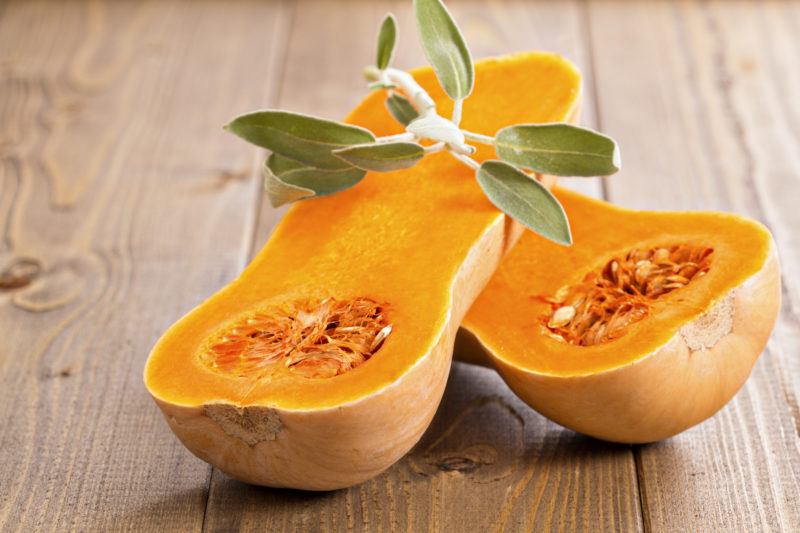Superfood Spotlight: Butternut Squash
Article posted in: Diet & Nutrition
Fall brings the best gifts, like vegetables that taste like candy when they’re cooked. One of those sweet and savory surprises is butternut squash.
Butternut squash is plain old beige on the outside but life-of-the-party orange-yellow on the inside, ready to pop in the oven and enjoy with virtually no seasoning.
One cup of butternut squash is only 63 calories, has 2.8 g of fiber and a whopping 14,882 International Units (IUs) of vitamin A. The recommended Daily Value for vitamin A is 2,500 IU for women and 3,000 IU for men. That orange color tells you it’s packed with betacarotene, an antioxidant pigment that turns into vitamin A in your body.
Don’t worry about an overdose. It’s rare that you get your A from plant sources. However, if you do eat lots of betacarotene-rich veggies, you could develop an orange tint to your skin! (Don’t worry, it’s harmless, says the National Institutes of Health Office of Dietary Supplements.)
Butternut squash also has 29.4 grams of vitamin C, which is about a third of your recommended daily value for this powerful antioxidant vitamin. Best of all, the vitamin C survives cooking which may account for its health benefits.
Furthermore, butternut squash is also a good source of potassium, iron, riboflavin (a B-vitamin) and magnesium.
Though it’s high in complex carbohydrates, this type of carb breaks down to sugar slowly, which helps stall the release of insulin (and those pesky carb/sugar spikes that can leave you tired and hungry).
You can eat all of it but the skin—even the seeds. When you remove the seeds, roast them lightly at around 160-170 degrees for 15-20 minutes to preserve the valuable linoleic and oleic acid they contain and eat them like pumpkin seeds. They have more nutritional value than pumpkin seeds—specifically, a higher amount of antioxidant carotenoid chemicals as well as vitamin E.
Scientists are now examining whether a chemical in butternut squash called cucurmosin can curb the growth of cancer cells by triggering cancer cells to die. So far, it shows promise in laboratory and animal studies when exposed to pancreatic and liver cancer cells, says the American Botanical Council.
Butternut squash also contains lutein and zeaxanthin, which help protect your eyes by filtering ultraviolet rays of the sun, curbing damage to your lens and retina.
When shopping for butternut squash, look for a nice matte finish (a shiny squash isn’t ripe) and a dark beige color. Also, give it the “heft” test. A ripe squash is heavy for its size.
If you’re wondering how to cook it: You can steam, boil or roast it; cube it and add it to curry; bake and stuff it; mash it with yams or add to stew like a potato. We like it sprayed with zero-calorie cooking spray, tossed in cinnamon and then roasted.
You can use it to sweeten this delicious Butternut Squash Turkey Chili or let it lend its sweet, creamy flavor to this Creamy Butternut Squash Soup recipe, an autumn staple.
You can also get a filling dose of protein in this Butternut Squash Chicken Chowder recipe with its thyme-rosemary-bay leaf seasoning.









